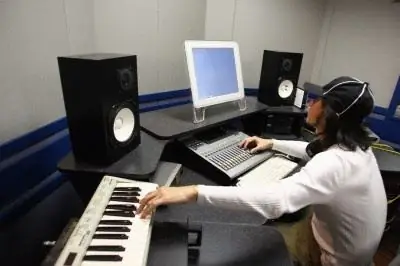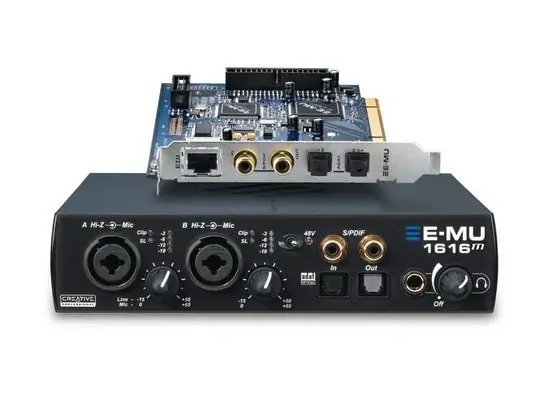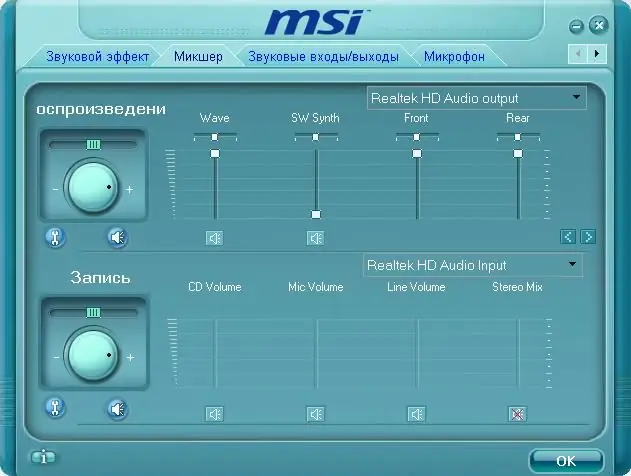Long gone are the days when a computer was considered a luxury and was mainly used only for work. With the advent of cheap components, almost everyone can buy a PC. How many users, so many requests - someone needs a workstation, and someone needs an entertainment center. However, no matter how the computer is used, the presence of sound is almost always required. Let's look at examples of how to solve this problem.

It is necessary
- - instructions for using the sound card
- - any audio output device. For example, speakers or headphones (to test the sound).
- - microphone (optional). Also to check the operation of the audio card.
Instructions
Step 1
The first step is to decide what role the quality of your PC's music will play for you. True music lovers and movie lovers with multichannel sound will undoubtedly need an external sound card, which can cost a lot depending on the model.

Step 2
For the rest of the users and the majority of gamers, the sound card built into the motherboard will be enough.
Step 3
To determine if you have built-in audio, take a close look at the back of your system unit. An example of audio outputs is shown in the figure.
Step 4
In order for your built-in sound card to work correctly, install the sound drivers that come with the motherboard drivers. In most cases, when installing drivers on the "motherboard", the sound is installed automatically. If this did not happen, select the appropriate item in the menu of the disk with the motherboard drivers.
Step 5
If for some reason the driver disk was lost, then you can always find the latest drivers on the official websites of motherboard manufacturers. Sound drivers can be found precisely by the name of the motherboard.
Step 6
If your sound card was purchased separately, make sure that the slot for its installation is clean and free of dirt. This can impair contact with the card outlets. Also, keep the pins on the sound card itself clean and free of grease.
Step 7
Install the drivers from the CD supplied with the sound card.
Step 8
After installing the drivers, you need to make additional sound settings.
For the Windows XP operating system, go to the following address: "Start" - "Control Panel" - "Sounds and Audio Devices". In the window that opens, select the "Audio" tab.
Step 9
In this tab, pay attention to the "Volume" buttons. They allow you to adjust the volume not only for the speakers, but also the sound level for recording from the microphone.
Step 10
In the same window, on the "Hardware" tab, you can also find sound devices in the list of installed equipment.
Step 11
In addition to the above-described “Sounds and Audio Devices” settings window, in the control panel you can find a shortcut to the sound settings panel directly under your sound card.
In the case of Realtek drivers, this shortcut looks like a speaker and is called “Realtek HD. Audio control panel.
Step 12
In the sound control panel, you can not only adjust the volume levels, but also apply various effects to the sound, as well as enable the noise suppression function for the microphone (the panel's appearance and the capabilities provided depend on the brand of the sound card).

Step 13
If the audio card is external, then after installation, most likely you can also observe the shortcut in the general list of installed programs. (for example, "Start" - "All programs" - "Sound card brand name").
Step 14
Of course, it is impossible to test the operation of a sound card without speakers or headphones. Connect them to the appropriate connectors on your sound card. Observe the color coding - the speaker / headphone plug (usually green) must be inserted into the green connector on the sound card. The microphone is pink. The rest of the connectors are used to connect multichannel systems.
Step 15
To precisely determine the purpose of certain colors of the sound card outputs, use the instructions for the sound card (a separate document in the case of an external sound card and a section in the instructions for the motherboard).
Step 16
Also, in most cases, the purpose of the sound card outputs can be found in the sound control manager.






